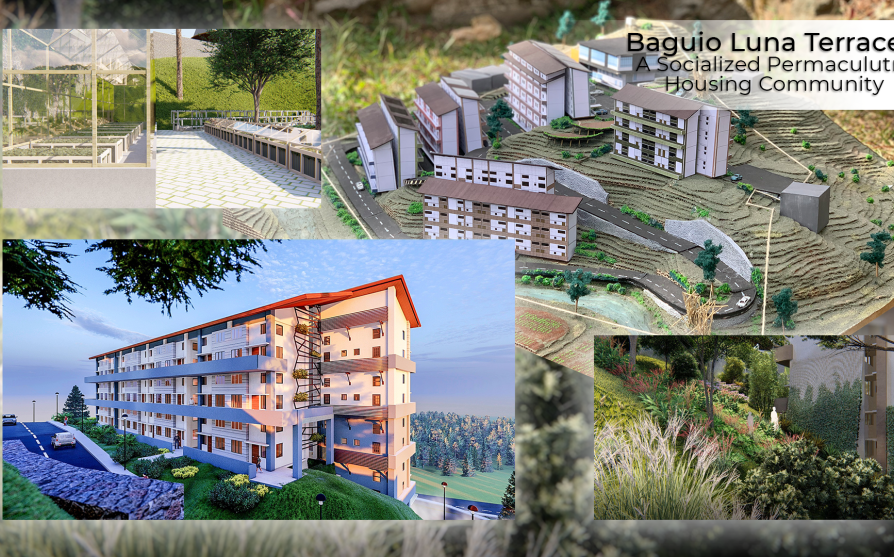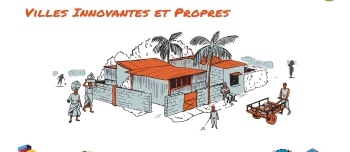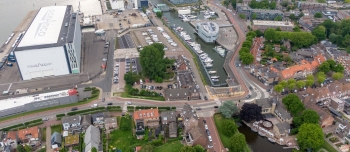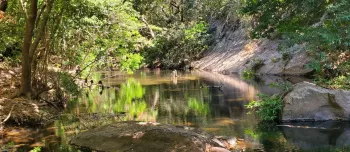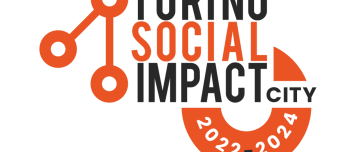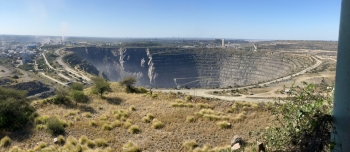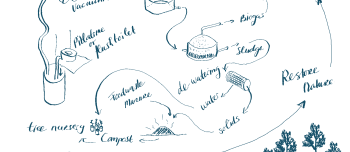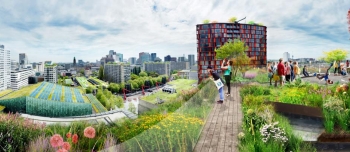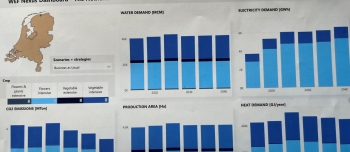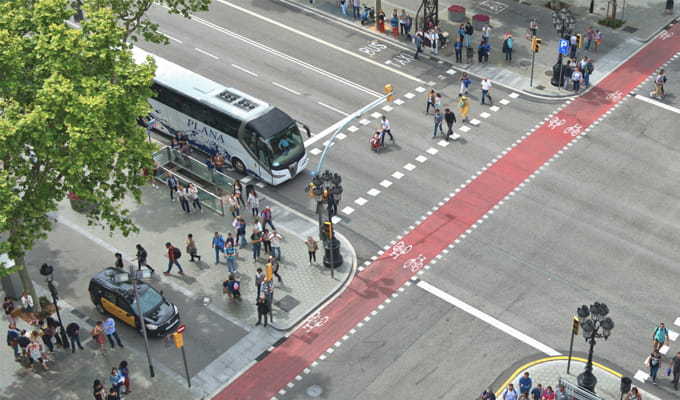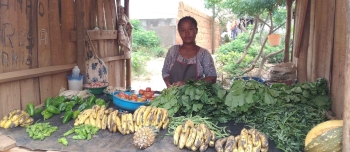Luna Terraces : Socialized Permaculture Housing Community
Housing and Urban Development is one of the priority sectors that have a direct impact on the long-term vision of the Philippines, on which Baguio City’s plans are anchored to. The City aims to build safe, resilient and sustainable communities in adherence to Sustainable Development Goal 11 and recognizes the importance of quality housing despite the current housing need. The growing backlog of housing units in Baguio City is triggered by the influx of people wanting to settle in the urban area because it is the center of business, commerce, and education in the Cordillera Region.
Baguio City is becoming increasingly urbanized and is continuously transforming into a green, smart, and creative City which result to economic growth. This rapid development has also resulted to a growing number of informal settlers, insufficient and inadequate housing infrastructures and services, and unplanned urban sprawl. In the Local Shelter Plan of the City for the year 2018-2026, low-income wage earners from the government sector, 2,704 displaced households and 3,361 informal settlers from the different barangays/villages in the City are targeted to be provided with socialized housing. With this intention, the local government of Baguio intends to eliminate the housing backlog by the year 2030 by ensuring access to adequate, safe, sustainable and affordable housing, basic services, and green and public spaces with special attention to the needs of the vulnerable sector which includes women, children, persons with disabilities and senior citizens.
The Luna Terraces as a permaculture community directly addresses multiple Sustainable Development Goals (SDGs 1, 2, 3, and 15). This responds directly to poverty, hunger, good health and well-being, and life on land. At present, the City has 2,946 poor and vulnerable households who are beneficiaries of social assistance and development from the City Government. As of 2018, 1.5 percent of the population is below the poverty line. In 2019, childhood malnutrition and food insecurity has resulted to stunted growth in 2.42 percent of children, 1.09 percent were underweight, and 0.74 percent were overweight/obese. With the integration of permaculture, these issues on poverty and hunger can be addressed with the incorporation of new methods of access to quality nutrition, smart agriculture and urban gardening. Subsequently, healthy lives are ensured and well-being at all ages is promoted. The development of an urban agricultural system in a sustainable way contributes to SDG 15 particularly in the management of a food forest and in the preservation, protection and promotion of the sustainable use of such ecosystem. It also supports the target of integrating ecosystems and biodiversity values into national and local planning, development processes, and poverty reduction strategies.
The City’s permaculture community has the potential to be a model for sustainable community development and ecotourism. This can be achieved with the creative systems thinking and design principles that showcases the sustainable management of energy consumption, water usage, and wastes treatment. The permaculture core ethics contributes to this direction. Such ethics include biodiversity conservation, soil health, air and water quality, food security, food sovereignty, health and well-being, social justice and human rights, sharing of knowledge and fair allocation of resources.
To reduce the housing backlog, the City has established a solid partnership with government agencies such as the Department of Human Settlements and Urban Development (DHSUD) and the National Housing Authority (NHA) in order to fund and develop the Luna Terraces housing site. The DHSUD granted Php 155M for the site development and Php 50M from the NHA for the construction of two (2) buildings with 62 units, and another Php326.17M for the completion of eight (8) remaining buildings and its permaculture development.
The architectural plan includes ten (10) buildings containing 260 housing units, community center, greenhouses, nurseries, and greenspaces. Access roads will also be constructed and linked to the City network in order to maintain the residents’ access to employment, social, health and education services outside the housing development.
The Luna Terraces aims to protect the lives and assets of the propective beneficiaries, especially those currently living in high-risk areas. The City Government intends to resettle them to a safe site and improve and re-establish their socio-economic conditions.
This housing project is tailored to the target beneficiaries’ socio-economic characteristics and needs. Housing assets will be replaced and economic activities and access to social and public services will be re-established. Designed with due consideration to the community social organization and cultural patterns. Information on the population to be resettled was collected which includes the physical, legal, economic, social, psychological, cultural, and environmental needs and requirements.
VISION: "To provide affordable and sustainable homes to families regardless of economic status, in a healthy and diverse community by championing community food forests and survival gardens designed to build community resiliency and local food security and fostering community-driven development."
MISSION: "To build quality homes and a healthy ecosystem where families can live, work and thrive through the adoption of culturally and naturally acceptable practices that are aligned with enabling sustainable food production through smart agriculture within a livable urban environment."
VALUES:
1. SUSTAINABILITY: observing and engaging nature in coming up with sustainable solutions to address emerging needs and drive long-term environmental and economic priorities that ensure the survival of the community for generations to come;
2. INTERDEPENDENCE: building solidarity and mutual respect to each other, with a community that works together towards a shared goal, enjoying and appreciating a safe, organic, and biodiverse ecosystem using holistic permaculture design methods;
3. INNOVATION: working towards innovative thinking and action to improve community processes and realize positive change by valuing and making use of all available resources where nothing goes to waste
4. FORWARD-THINKING: creativity, adaptiveness and versatility are adopted by the community as it builds permaculture solutions for the future;
5. CARE FOR PEOPLE- there is food security, food control, health and well-being are promoted, social justice is present and human rights are nurtured;
6. CARE FOR THE EARTH- supports biodiversity conservation, soil health, air and water quality; and
7. FAIR SHARE: low/medium income families and the whole community is equally benefitted because of the fair, respectful and understanding relationship between and among the community dwellers.
GOALS:
1. To provide decent housing for low/medium income families and uplift their standard of living;
2. To provide a variety of housing types, of different sizes and level of affordability, to accommodate different types of households;
3. To ensure clean air, free of harmful air pollutants, and green spaces for everyone to enjoy;
4. To educate and empower the community by nurturing a more liveable human habitat and a sustainable food forest;
5. To strengthen the community so that it can prosper in the face of adversity by developing a food forest through community engagement, leadership and advocacy;
6. To ensure equitable access to forest gardening opportunities and to local, healthy produce from smart agriculture;
7. To overcome urban isolation by providing opportunities for people to garden and tend the food forest together, learn from each other, develop a sense of community, and create a liveable environment;
8. To reduce external costs and maintenance, especially on aspects of physical design and permaculture elements;
9. To design and build housing structures in order to reduce energy and food costs, and inspire beneficiaries with more holistic and liveable accommodations;
10. To provide a community that has an easy and nearby access to goods and services, health care, emergency series, and schools; and
11. To start a community that will promote green infrastructure development and construction and pave way for green building policies and ordinances.
Stage of the project
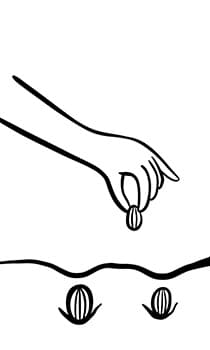
Idea
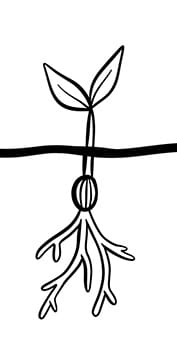
Starting Up
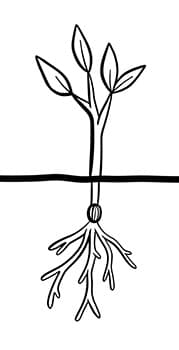
Implementation

Realised
